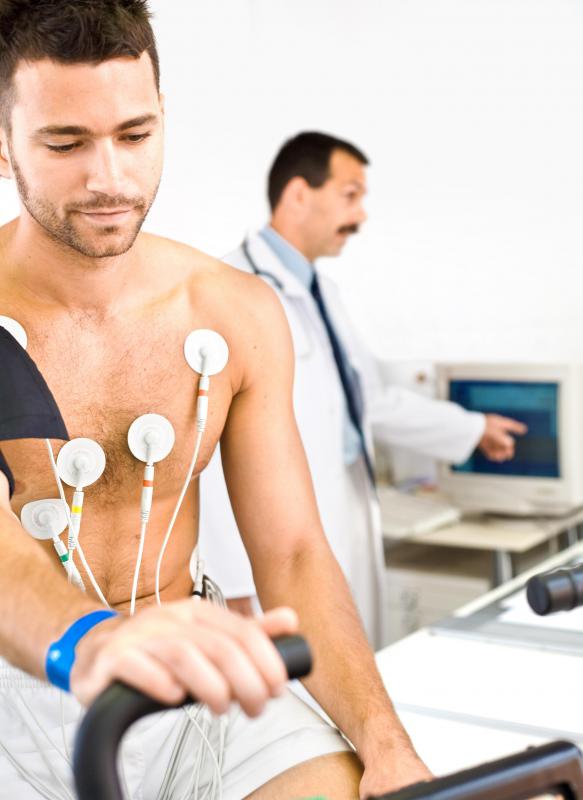At WiseGEEK, we're committed to delivering accurate, trustworthy information. Our expert-authored content is rigorously fact-checked and sourced from credible authorities. Discover how we uphold the highest standards in providing you with reliable knowledge.
What are the Different Types of ECG Machines?
Electrocardiography (ECG or EKG) machines are available in a variety of different types that offer different features, from the most basic hand-held devices to fully featured machines for use in cardiac centers. All ECG machines work in basically the same way and are used to perform electrocardiogram tests looking for heart rate abnormalities. The main difference between the types is found in the amount of information they gather, the information they display and record, their portability, and their usability features.
ECG machines are a type of medical diagnostic equipment used to monitor heart rate, specifically the electrical current produced by the heart as it beats. They are referred to according to the number of leads they have, that is, the number of electrical signals that are monitored at a time. The standard full ECG is a 12-lead, which uses six electrodes on the chest and one on each limb for a total of 10 electrodes. The configuration of the electrodes produces 12 leads by the way signals are transmitted between them. The electrodes themselves are sometimes called leads, but this is not technically accurate because a lead is actually composed of a group of electrodes.

Each lead transmits information to the main machine, which produces a graph depicting the signals. This graph can be interpreted to determine whether a patient has any cardiac abnormalities, such as those produced by a myocardial infarction — a heart attack. Some machines come with interpretation built into the device, which makes them easier to use. A patient's most recent ECG results can be compared with his or her previous ECG results to track cardiac changes.

ECG machines with a smaller number of leads, such as two- or three-lead electrocardiogram devices, are also available and are particularly useful in mobile or resource-poor settings. Other ECG features that are useful in these settings include the option to transmit results to a remote physician via a phone line, or to send results wirelessly to a printer or computer system. ECG machines that are wearable are also available and are useful when a patient has symptoms only intermittently, so that no abnormalities are seen in a clinic visit but might be seen if the ECG were taken at another time.

Recording capabilities vary between machine types, as well. Some machines are used mainly to monitor heart rate in real time, such as during surgery, and may not keep a record. Some older models automatically print results on ticker-tape paper, other models print like a regular printer, and some models need to transmit their data to other devices before printing is possible. Digital records are also kept on some types of ECG machines.
AS FEATURED ON:
AS FEATURED ON:















Discuss this Article
Post your comments